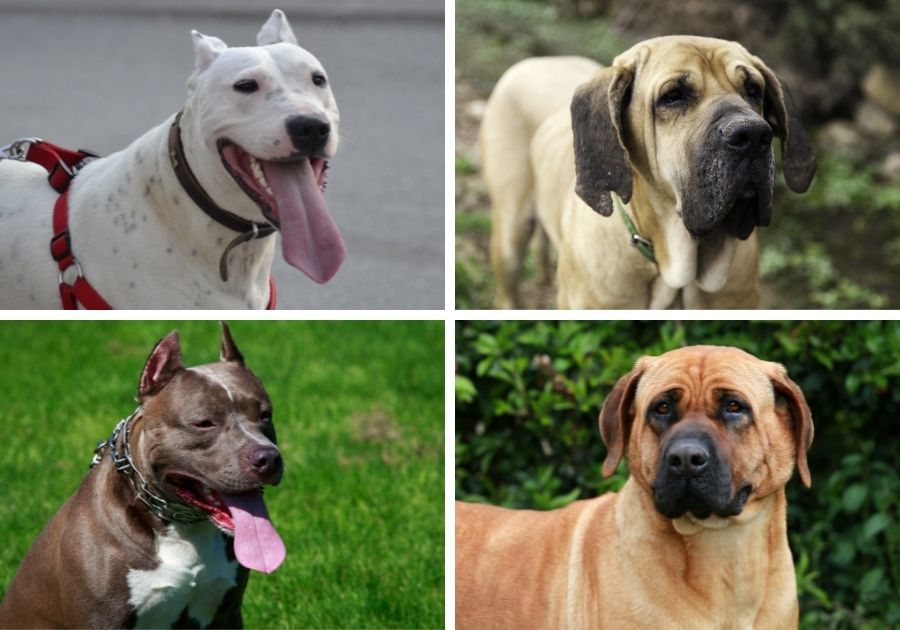It’s an indisputable fact that dogs are the most favorite pets amongst most people.
This can be attributed to their loyal nature, tendency to please their owner, and loving personality, making it hard not to fall in love with them.
When it comes to adopting a dog as your companion, two breeds usually stand out the Polish Tatra Sheep Dog Vs Great Pyrenees.
These two dog breeds are characteristically thrilling, making it hard for most potential dog parents to choose between them.
So, whether you are a veteran dog owner or you simply cannot choose between the charm of the polish Tatra sheepdog vs the great Pyrenees, I’m here to help you make an intelligent decision.
I help you understand in-depth the breed information of these 2 dog breeds and the main differences that set these two canine companions apart.
I’m optimistic that you will be able to decide which dog suits your needs by the end of this article.
So, let’s dive in!
| Attributes | Polish Tatra | Great Pyrenees |
| Good For First Time Owners | No | No |
| Good Guard Dog | Yes | Yes |
| Apartment Friendly | No | No |
| Good Family Dog | Yes | Yes |
| Shedding | Moderate to High | Moderate |
| Barking And Howling | Moderate To High | Moderate to High |
| Height | 24-28 inches (61-71 cm) | 25-32 inches (63-81 cm) |
| Average Life Expectancy | 10-12 Years | 10-12 Years |
[wpsm_toplist]
Polish Tatra Sheep Dog – Dog Breed Information
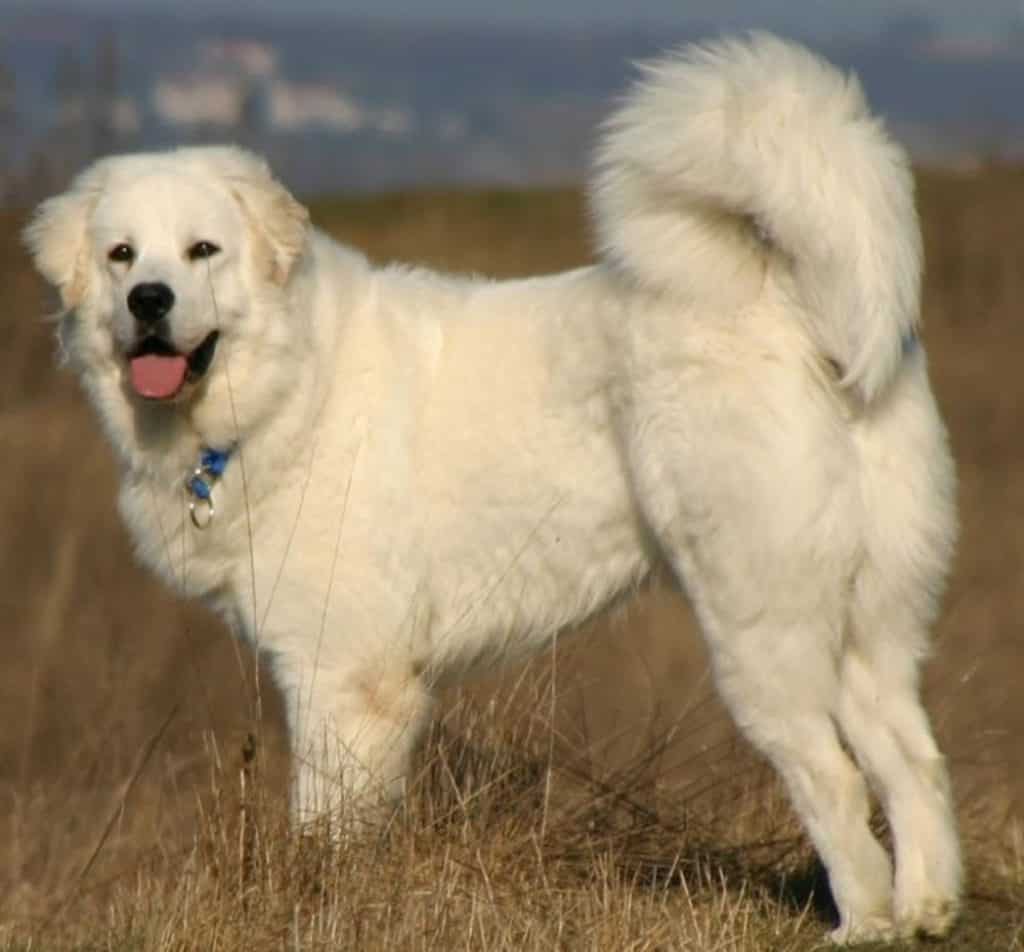
Polish Tatra sheepdog has unmatchable alertness coupled with an instinct to be a guardian dog (more of a sheep shepherd).
These calm and quiet white-furred dogs can easily be mistaken not to be industrious, but in the real sense, they are known to be versatile when it comes to their laid-out job description.
They diligently guard a herd of sheep or livestock and won’t back down on a challenge to push a cart or help a mountain trekker.
A Brief History Of Their Origin
Known as Polski Owczarek Podhalanski in the native Polish language, these guardian dogs are believed to have originated from the Tatra Mountains of Poland several centuries ago.
These dogs are descendants of the Mastiff (a breed of large and powerful dogs).
The Polish natives bred these canines to herd and guard livestock under extreme environmental conditions.
During the Communist regime in Poland around 1952, these workaholic dogs almost went into extinction.
Efforts put into place to preserve these industrious dog breeds by the Fédération Cynologique Internationale (FCI) saw the breed preserved.
By around 1980, the Tatras had already been introduced to Canada and America, and in 1995 the United Kennel club acknowledged the Tatras in their registry.
Lifespan
These hounds can live for 10-12 years.
However, common medical conditions like allergic dermatitis, epilepsy, and Atrioventricular Valvular Insufficiency may reduce the lifespan of these over-achiever canines.
Physical Attributes
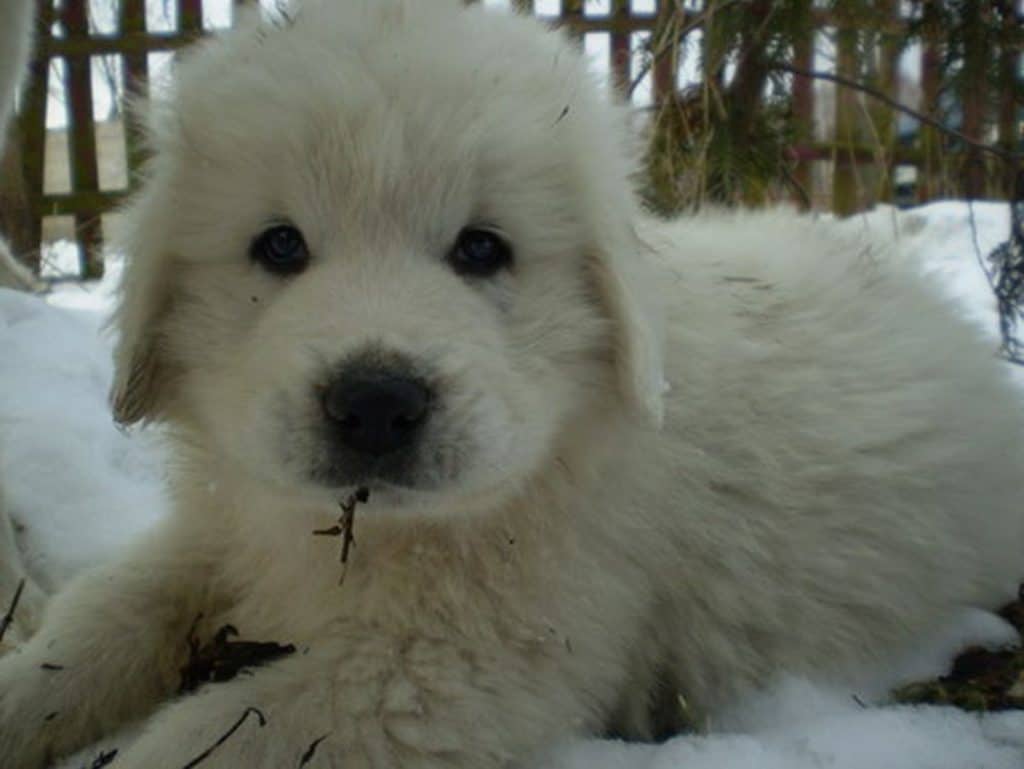
Coat Hair And Color
They are typically white in color. Their thick double-layered coat is usually wavy in pattern and helps them withstand the extreme weather temperatures where these dogs inhabit.
They also have lots of hair on their legs and tail.
Specific Body Parts Appearance
Growing to a height of 24-28 inches and weighing 79-130 pounds, these dog breeds have a long and pronounced muzzle with a slightly doom-shaped skull.
Their dark eyes are slightly slanted, giving these dogs a characteristic expressive look. Their lightweight hanging ears are triangular in shape with rounded tips.
The nose is typically black, just like their generally white coat.
Temperament
These dog breeds are famous for their high intelligence and independent spirit.
They are non-aggressive to kids, and other household pets around them (so long as they have been socialized adequately) and naturally won’t mind protecting them as their own.
They can be pretty territorial when it comes to a stranger, and they will not mind barking out loud to notify you that someone new is around your property.
It’s important to note that these menial canines need ample space to use up their energy and exercise, thus making them not to be apartment friendly.
Also, it’s not recommended that you get yourself this easy-to-love dog breed if you are a first-time dog owner, as it requires an experienced dog owner to handle these hounds.
However, suppose you cannot resist the urge to adopt this dog breed.
In that case, it is advisable that you hire the services of a professional dog trainer and let them help you shape your lifetime companion’s personality.
Great Pyrenees – Dog Breed Information

Also known as the Patou in France and nicknamed Pyrs in some countries, the Great Pyrenees is a livestock guardian dog known for its calm and polite nature and its commitment to its family.
During World War II, these dogs played an essential role in bringing artillery supplies over the Pyrenean border (border between Spain and France), making them a popular breed to own either as a guard dog or a household pet.
A Brief History Of These Highly Intelligent Dogs
The great Pyrenees are named after the Mountains of their origin, the Pyrenean mountains.
This dog breed is believed to have evolved from the white Mountain dogs found in Asia Minor (modern Turkey) around 1800 B.C -100 B.C(the bronze age).
These canines gained popularity among the French nobles to the extent that King Louis XIV’s royal court declared them the royal dog of France around the 17th century.
This mountain dog was first introduced into America in1824 by a known French military officer known as Marquis de Lafayette, who wanted to gift his friend J.S Skinner this fine Pyrenean Mountain dog.
Lifespan
This lifetime companion has a life expectancy of 10-12 years.
Chronic dental diseases, cancer, Addison’s disease (caused by the adrenal gland’s insufficiency to produce certain hormones), and patellar luxation (floating knee in layman’s terms) are the most common medical conditions known to lower the life span of these fantastic dogs.
Physical Attributes
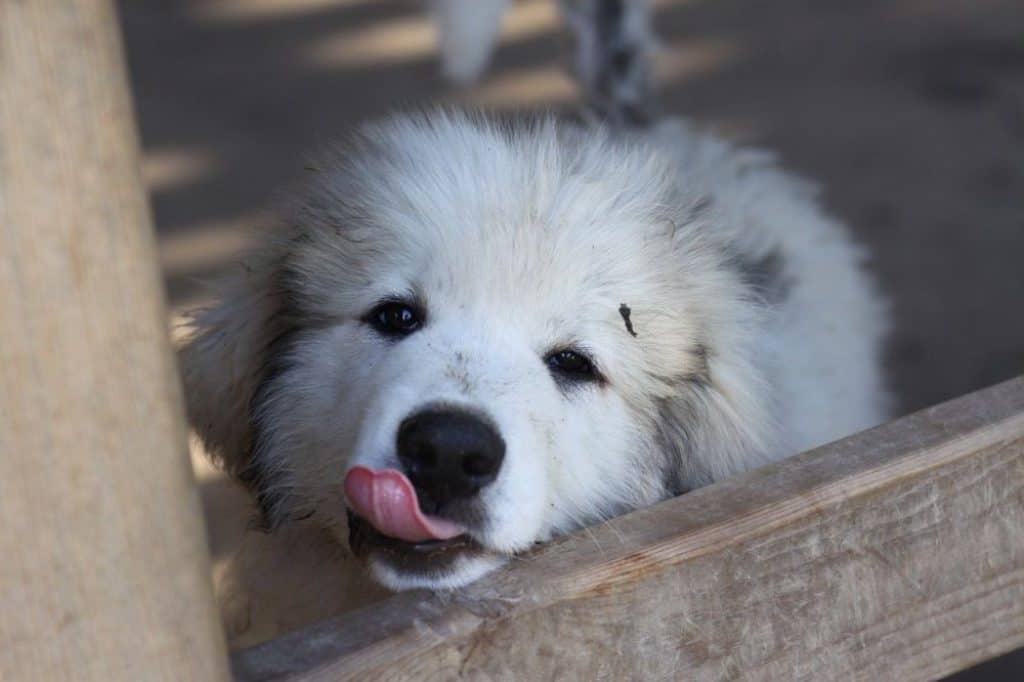
Coat Hair And Color
This dog breed has a white or creamy coat with red-brown, gray, and badger markings. These markings usually don’t exceed 1/3 of their coat’s covering.
Its skin is typically thick, water-resistant, and double-layered, making these delightful canines able to adapt to their cold mountain habitats.
Specific Body Parts Appearance
Growing to a height of 25-32 inches long and weighing 79-119 pounds, these giant-sized dogs have a wedge-shaped head with dark almond eyes.
These composed dog ears are usually small to medium-sized with a V-like shape.
There also have double dewclaws (remnant digit) on each of their rear legs, making them be on the list of the few dogs with this classical feature.
Temperament
Pyrs are affectionate and caring dogs who won’t hesitate to protect what they deem as family.
Their patient nature and desire to protect make them a good pet for a family with small kids around, so don’t freak out if you find your Patou babysitting your kid(s).
They are also innately nocturnal (primarily active at night).
These breeds do not love getting overstimulated when it comes to physical exercising, so a maximum of 30-60 minutes of outdoor exercise is enough physical stimulation for these dog breeds.
But just because they don’t love exercising doesn’t mean that they love small cramped places.
So, if you live in an apartment with no backyard for your dog to play in, please don’t adopt this doggy for the sake of both you and your dog’s sanity!
Polish Tatra vs Great Pyrenees – What’s The Difference?
| Polish Tatra | Great Pyrenees |
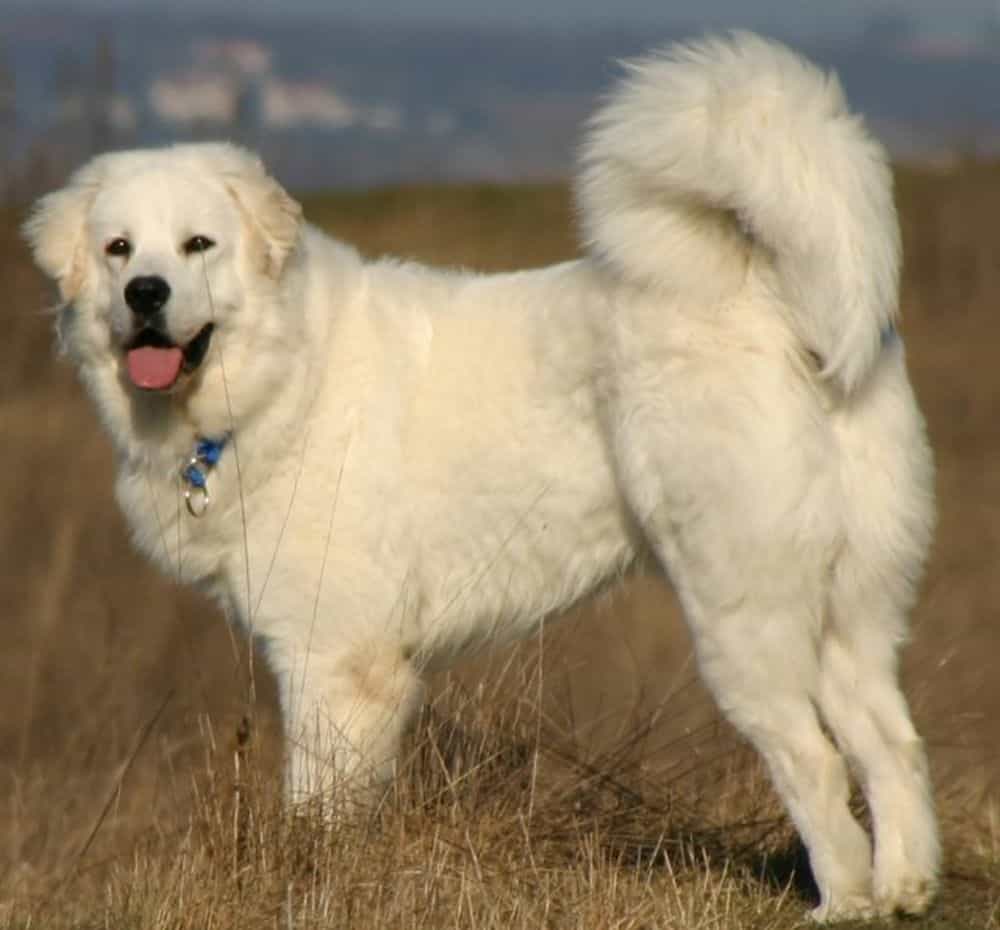 | 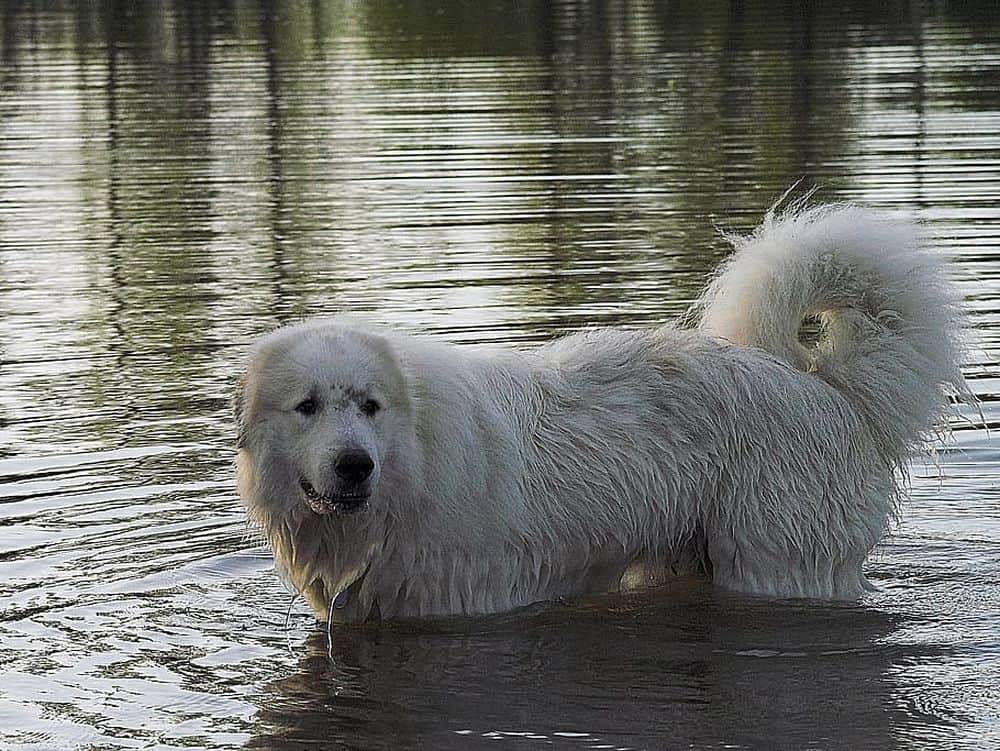 |
| Polish Tatra Sheepdog by Svenfischer (CC BY-SA 3.0) |
Below are some of the main differences that set these two unique dog breeds apart;
Breed Focus Level
- The polish Tatra is not easily distracted, while the great Pyrenees is easily distracted
- The polish Tatra is not as patient as the Great Pyrenees
Exercising Needs And Energy Levels
- Polish Tatra requires high exercising needs while the great Pyrenees requires low exercising requirements (30-60 minutes in a day is enough)
- The running speed for the Polish Tatra is 18MPH, whereas the running speed of the great Pyrenees is 25MPH
Grooming
- Polish Tatra sheds more than the great Pyrenees
- Polish Tatra doesn’t drool at all, whereas the Great Pyrenees drools minimally
- More time is required to groom the Polish Tatra than the Great Pyrenees
Living Environment
- The Polish Tatra cannot tolerate living indoors for long periods, whereas the Great Pyrenees will comfortably adapt to living indoors
- The Polish Tatra can tolerate a living environment with temperatures of 15°F to 85°F whereas the Great Pyrenees can tolerate living environments with temperatures of 0°F to 85°F
Country Of Origin
- The Polish Tatra originated from Poland, while the Great Pyrenees originated from the Pyrenean mountains between Spain and France
Intelligence Level
- The Polish Tatra Sheepdog is quick-witted, while the Great Pyrenees is averagely intelligent
Kid-Friendly
- The great Pyrenees is more kid friendlier than its almost look-alike dog
Key Takeaway
Both the Polish Tatra sheepdog and the Great Pyrenees dogs are an excellent choice of dog to adopt in your home.
However, it is highly recommended that an already experienced dog owner adopt the Great Pyrenees dog breed due to its needs, temperament, and body stature.
Before settling on either of these loyal and affectionate dogs breeds, it’s best that you understand which dog will suit your needs and if you can take good care of it once you adopt it.
Always ensure that you get your dog from a certified dog breeder to ensure that your dog has the right genetic quality for it to lead a healthy dog life.

